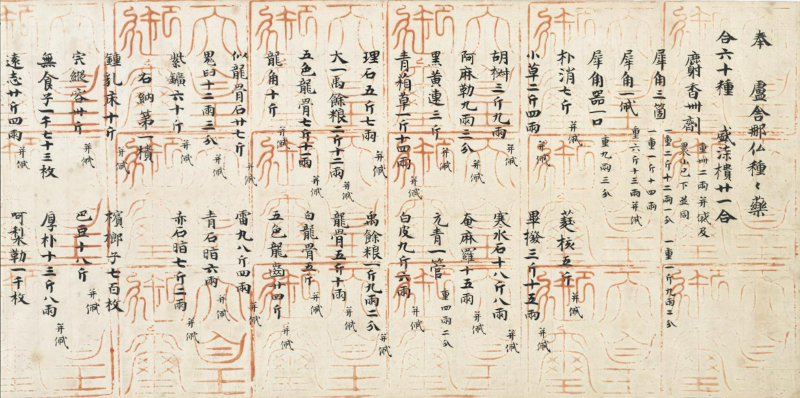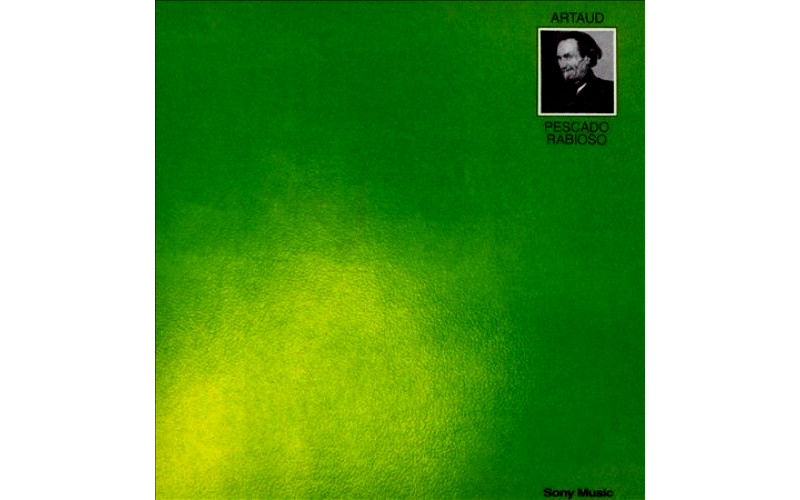Hoshiko
Ume(Plum) liqueur "Hoshiko"
"Hoshiko" is a Japanese plum liqueur.
Hoshiko is a vodka-based liquor in which plum fruits picked that year are soaked and flavored with several herbs and spices. The sourness of the plums and the complexity and sweetness of the spices combine to create a complex, deep, and richly inclusive liqueur, and naturally, the recipe (a vast equation) is a secret. When we sip Hoshiko, we Japanese feel a sense of familiarity, perhaps because it is derived from ume (Japanese apricot), and at the same time, we also feel the complexity of the intertwining of exotic spices. The sweetness of the Hoshiko also envelopes all kinds of sake, and we are surprised at the depth of the cocktail, which can be sublimated into a delicious cocktail no matter what kind of unique sake it is paired with.
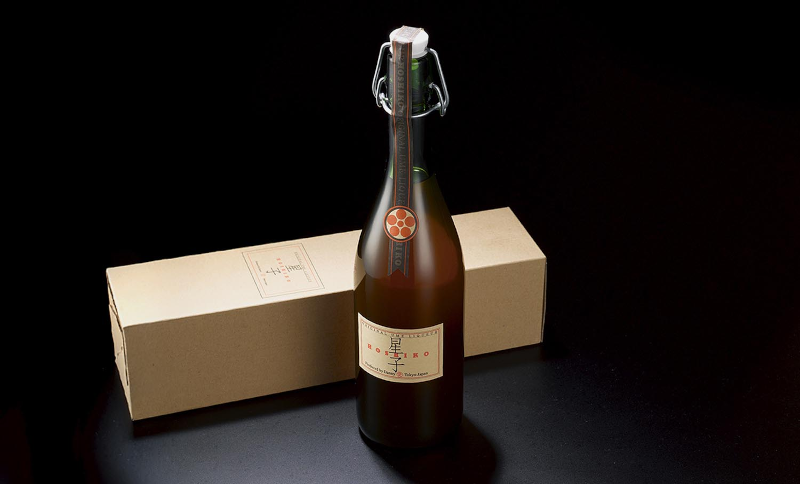
Japanese plum liqueur "Hoshiko"
Play in the night with a candle
「秉燭夜遊」
「秉燭夜遊」
Night comes to every city, town and village in all over the world without division. And the night has its own particular fragrance. But this is not because the night itself is fragrant. Night has a scent because darkness deprives us of sight, and instead our sense of smell becomes acute, allowing the previously hazy outlines of scents to become clearly.
That is why the Bar must have darkness. This is because it is a place where city dwellers can get away from the daily grind and busyness, return to the wild and regain their keen senses.
Hence there must be play in the faint light of the Bar's darkness. There must also be flowers. This flower is the drink, and its aroma is what stimulates and awakens our senses, which are becoming more acute as the night falls.
On such a night, it would be great if there was a Hoshiko cocktail on the bar counter in front of you. Because it is not an anticipation of the night to come, but a guarantee that the night will be a fulfilling one.
The phrase "秉燭夜遊" means "Life is fleeting and short, so when it gets dark at night, take a light in your hand, play and enjoy your life". The phrase originated from a poem by the Tang dynasty poet Li Bai, known as the Immortal Poet, in his Preface to Banquet in the Peach Garden on a Spring Night.

Li Bai
Li Bai's love of drinking is well known. This is evidenced by Du Fu, a good friend of Li Bai's, who said that Li Bai "could make out a hundred poems after drinking liquor". Li Bai's love of wine is reflected in the following poem.
古人秉燭夜遊 良有以也
The ancients lit candles and played until midnight for a very good reason.
Life is short. That is why in ancient times people took the dim light of a candle and played by night with it. And there was probably always a bottle of liquor by their side. Li Bai wrote his poems after drinking, or in other words, it was the drinking that made him write his poems. The same is true of modern urbanites who go to bars at night in search of darkness. It is not alcohol for getting drunk, but for 'playing', and alcohol makes people creative.
Wen Xuan also contains the following poem by an unknown author.
生年不滿百
常懷千歳憂
晝短苦夜長
何不秉燭遊
何能待來茲
愚者愛惜費
但為後世嗤
仙人王子喬
難可與等期
Translate:
Man's life is less than a hundred years
It is ridiculous to always have a thousand years of sorrow
The day is short and the night is long
Why don't you play at night with a candle in your hand?
It's impossible to try to extend it to next year
Fools never spend money and don't to try enjoy
It will only make you the laughing stock of future generations.
The hermit, Joe Wang,
He has attained immortality. however we can't get it.
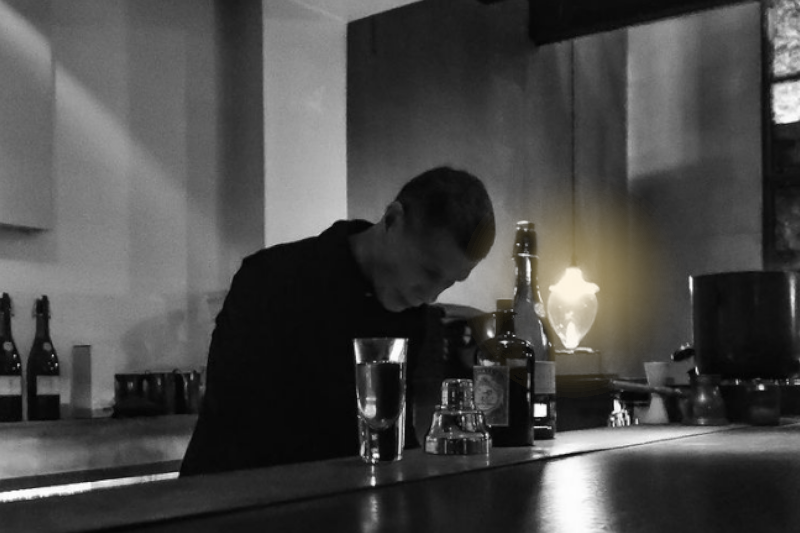
Hoshiko is a liqueur created by Danny Aikawa, who has passed through the night scene of Tokyo's bars, where people gather at night with candles in their hands. As I sipped the Hoshiko cocktail served in the darkness and delicate light and shimmer, I was naturally reminded of the poem, "Why don't you play at night with a candle in your hand?" The Hoshiko is a drink that is truly suited for the Tokyo night of "秉燭夜遊".
I was born to play
The day is short and the night is long, Why don't you play at night with a candle in your hand? Since younger time, I have always repeated in my mind the popular song Ryōjin Hishō, which was popular in the Heian period (794-1185), thinking that it is inseparably related to this phrase.
Ryōjin Hishō
I was born to play
It is so cool to be able to say, "I was born to play". Japanese monk and writer Toko Kon once said, "Life is just a way to pass the time until die," but I am not the only one who thinks that Ryōjin Hishō written more than 800 years ago, has a more positive and radical outlook on life.
So, modern people should take play more seriously. Dutch historian Johan Huizinga (1872 - 1945) posited that the essence of human activity is play, and that play is at the root of culture, in his book of Homo Ludens. In the first place, Homo Ludens means a person who plays. Play is older than culture, and play has always preceded culture. In other words, culture can only be born from within play.
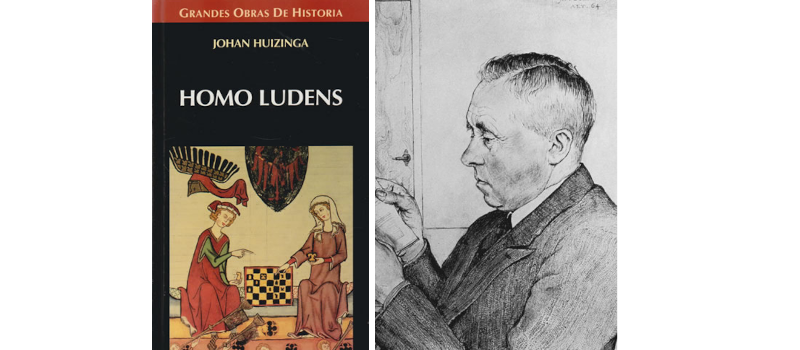
Homo Ludens:Johan Huizinga
What is the meaning of "play" as sung in Ryōjin Hishō, which says, "I was born to play".
Play, of course, does not mean to do gambling and going to red‐light district. In the Heian period (794-1185), "play" for adults at that time meant making poems, writing calligraphy, playing musical instruments, and playing the game of Go. In other words, to hold a candle in one's hand and to play these games at night was what play meant originaly, and it was impossible to play without good sense and education.
Needless to say, such creative play was supported by friends who shared the values "culture or taste" of the works produced through such play, and by the salons "place" where these people gathered. Such a "place" could be the "Bateau-Lavoir" in Montmartre, Paris, or the cafes in London described by Akio Kobayashi in Coffee House or the "Mermaid Tavern" where Shakespeare and his friends gathered. In Paris, there were places like the "Café de Flore" and the "Café de Magot" that used to be hangouts for existentialists and cultural figures. As well as these, no one can deny all of legendary bars are playing same role in the modern era.
Philosopher Hans-Georg Gadamer said in his book Truth and Method published in 1960, "Seriousness is also essential for play to be real play, who does not play seriously is the one who ruins the fun". In other words, seriousness in play is an important element, and for those who are willing to play seriously, the "place" where they gather is also an indispensable element in the formation of culture. For this reason, the salon culture centering on Bar has developed in the modern age. The role of the bar as a "place" where culture is born is quite important.
In these salons, alcoholic beverages and other stimulating beverages that appeal to our senses are served. These drinks are the catalyst for stimulating and sophisticated conversation. Hoshiko is a liqueur born from the many nights in the city of Tokyo. Danny Aikawa, who has served drinks as a bartender in the salon-like "place" where such serious games are born, that is why Hoshiko provides drinkers with a refined moment befitting the flower of nightlife.
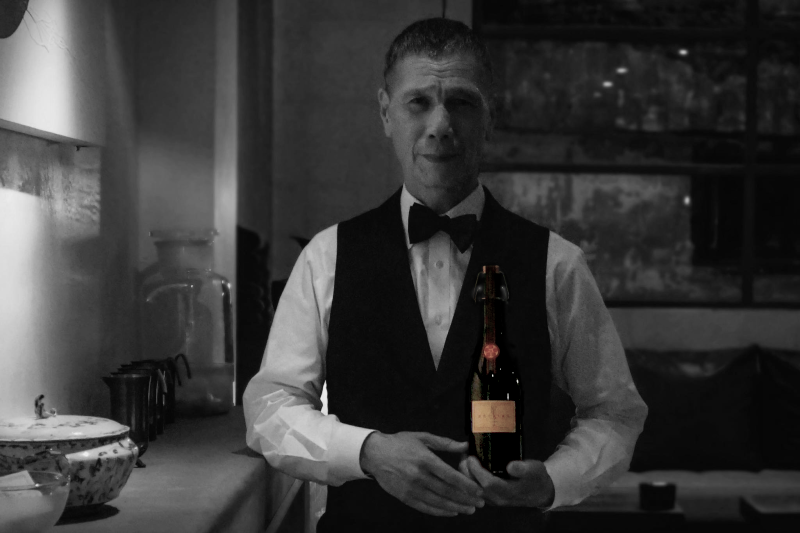
Danny Aikawa says that Hoshiko is "Man'yō liquor". This name is form Japanese oldest poem book Man'yōshū.
Ume plum was brought to Japan from the continent during the Manyo period (710-794), and was an advanced and sophisticated plant at the time. The fact that this plum was used in Hoshiko and became a liqueur called "Manyoshu" is deeply significant. In order to clarify this, I would like to introduce first focus on what salon in Japan were like in ancient times.
The Banquet of Plum Blossoms
The emperor was replaced and the year changed from Heisei to Reiwa, and the Man'yōshū attracted much attention again at this time. This is Japan's oldest collection of waka poems, thought to have been compiled by Ōtomo no Yakamochi (718-785), and Reiwa of the name of the era was taken from the poem "Banquet of Plum Blossoms". I would like to quote from that section first.
Man'yōshū Volume 5
初春(令)月、気淑風(和)、梅披鏡前粉、蘭薫珮後之香
Translation :
It was in new spring, in a fair (rei) month, when the air was clear and the wind a gentle (wa) breeze. Plum flowers blossomed a beauty's charming white And the fragrance of the orchids was their sweet perfume.
What we need to know here is under what circumstances and with what members the Plum Blossom Banquet was held. Following the contents of the preface, we learn that the Banquet of Plum Blossoms was held at the residence of Ōtomo no Tabito, who was posted to Dazaifu on 13 January in the 2nd year of Tempyo (730). Ōtomo no Tabito was the father of Ōtomo no Yakamochi, who is believed to have been the compiler of the Man'yōshū, and Yakamochi was only 12 years old at this time. Although he did not attend the banquet, he may have had memories of people gathering at his home. It is very interesting to find out how he felt about his father's the Banquet of Plum Blossoms and how he added it to the Man'yōshū.
At that time, Dazaifu was the window to the continent. In other words, it was the first place where the most advanced culture entered Japan. This banquet was held at the home of Ōtomo no Tabito, who was posted to Dazaifu, which was full of such enterprising spirit, where he loved plum blossoms and composed waka poems.
The 32 participating members included intellectuals of the time, such as Ōtomo no Tabito as the master, Ohito Ki as the main guest, and Okura Yamanoue as the other guest, all of whom are thought to have been sophisticated people with an aptitude for waka poetry. All of the participants each performed a waka poem on the theme of plum blossoms. In addition, sake was served at the banquet, and the waka poem describes how everyone drank sake and enjoyed themselves with a plum twig put on hat.
Waka poems about sake
Although there is no mention of alcohol in the preface, it is clear from the following four poems that alcohol was served at this banquet.
Author : Kasa no Maro
阿乎夜奈義 鳥梅等能波乎遠理可射之 能彌弖能能知波 知利奴得母興斯
Translate :
After folding the green willow and drinking sake with the plum blossoms in the crown, you will have no regrets when the plum blossoms have fallen.
Author : Dairyoushi Yaji no Sukunamaro
得志能波爾 波流能伎多良婆 可久斯己曽 鳥梅乎加射之弖 多努志久能麻米
Translate :
Every year, when spring comes, we want to keep drinking happily with plum blossoms flower put on our heads like this.
Author : Iki no Sakan Sonji no Okchikata
波流楊奈那宜 可弖良爾乎利志 鳥梅能波能 多禮可有倍志 佐加豆岐能爾
Translate :
Plum blossoms hand-folded to adorn the head, who floats these over the sake cup and drinks?
Author : Ōtomo no Tabito
烏梅能波奈 伊米爾加多良久 美也備多流 波奈等阿例母布 左氣爾于可倍許曾
Translate :
Plum blossoms come to me in a dream and say "I am a flower of elegance, so please let me into sake and drink it".
They did not only drink sake while admiring plum blossoms. They also composed waka poems about plum blossoms, floated plum blossoms flower in sake, and enjoyed putting plum blossoms on their heads. It is an interesting fact that plum blossoms have been enjoyed and drinking sake since the Man'yō period. The master Ōtomo no Tabito must have tried to create a kind of salon-like "place" where he could invite guests and play with waka poetry:literature.
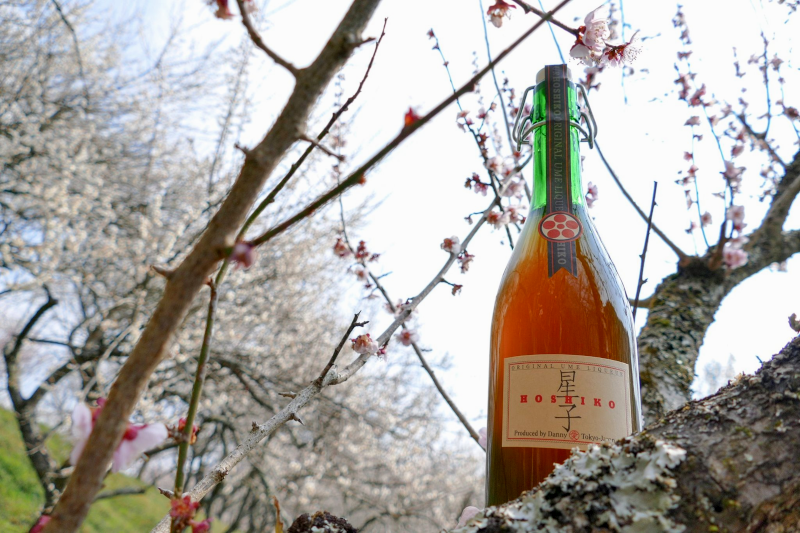
With this Japanese aesthetic of the plum as an undercurrent, Danny Aikawa call Hoshiko as "Man'yō liquor" probably. This is because for Japanese people, the plum blossom is a flower that evokes a salon-like connection from some ancient time. The Banquet of Plum Blossoms is a remarkable example from early Japan where plum blossoms played the role of connecting people and formed a literary salon space.
In fact, the plum blossom is in stark contrast to the cherry blossom. This is because cherry blossoms are associated with festive "place" such as banquets and drinking parties, while plum blossoms have long been associated with more intimate "place" with salon-like overtones. Against this background, the expression that Hoshiko is "Man'yō liquor" is a very apt one. This is because the liqueur Hoshiko appeals to the aesthetics and values that live deep within the Japanese people, and it seems to have something that resonates with us.
Waka poems about Japanese nightingale
As many as seven waka poems featuring nightingale were composed at the Banquet of Plum Blossom. The combination of plum blossoms and nightingale had already been a standard feature since this period. I would like to take up one of these poems.。
Author : Shoken Aji no Okushima
烏梅能波奈 知良麻久怨之美 和我曽乃々 多氣乃波也之尓 于具比須奈久母
Translate :
The plum blossoms flowers are falling and nightingales are singing in the bamboo grove in my garden.
The nightingale and the plum tree have both been popular themes in poems since Man'yō period. However, although the nightingale can be heard singing, it is a bird that is not easily seen. In early spring, when the plum blossoms are in bloom, the male nightingale starts to sing "Ho-ho-ke-kyo", which means that even though the figure of the nightingale cannot be seen, when the plum blossoms are in bloom, the nightingale's call complements the figure of this bird.
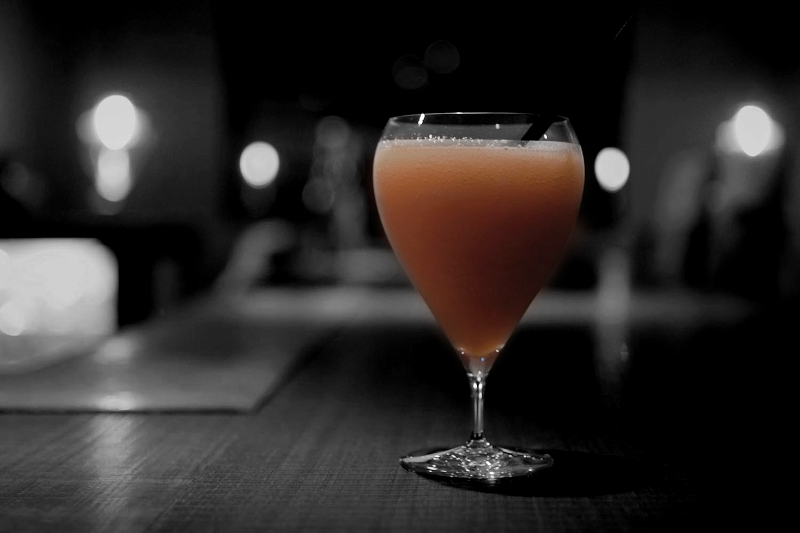
Thus, for a long time, plum and nightingale have been talked about as a set. Interestingly, there is a Hoshiko cocktail made by Danny AIKAWA called HO-HO-KE-KYO.
Cocktail:HO-HO-KE-KYO
Hoshiko 60ml
White Rum 30ml
Lime juice 15ml
Powder suger 1 tea spoon
Put 1 cup of crusher ice in the blender
Waka poem about play
Let us return to the Banquet of Plum Blossom. Six waka poems composed there refer to ”play”. I would like to introduce one of these poems below.
Author : Hajishi no Mimichi
宇梅能波奈 乎理加射之都々 毛呂比登能 阿蘇夫遠美礼婆 弥夜古之叙毛布
Translate :
Folding plum blossoms, inserting them in the head and watching everyone play with them reminds me of Miyako (the capital).
Like Ōtomo no Tabito, the organizer of the Banquet of Plum Blossom, the author of this waka poem, Hajishi no Mimichi had been posted to Dazaifu from the capital. The poem may have been composed out of nostalgia for the splendor of the capital when he saw people drinking sake while looking at plum blossoms and decorating their heads with plum blossoms. The banquet must certainly have been an enjoyable and festive time, but the people gathered at the banquet must have had a variety of feelings in their each hearts.
For example, it is thought that Ōtomo no Tabito's posting to Dazaifu may have been a leftward shift. Furthermore, his wife "Tajihi no iratsume" died soon after he was posted to Dazaifu, and the Banquet of Plum blossoms was held less than two years later. It is assumed that Ōtomo no Tabito may have had various inner thoughts as he looked at the plum blossoms after the new year. In the waka poem by Ōtomo no Tabito at the Banquet of Plum Blossom, a scene of flowers falling in his garden is described, and it can be read as if there was a certain feeling of loneliness in the midst of the gorgeous play.
Author : Ōtomo no Tabito
和何則能尓 宇米能波奈知流 比佐可多能 阿米欲里由吉能 那何列久流加母
Translate :
Plum blossoms fall in our garden. Is it because snow streams down from the heavens.
The Banquet of Plum Blossom took place in early spring, which was not yet the time when plum blossoms were falling. In other words, the flowers had not yet fallen in the garden. Nevertheless, it is thought that the reason why Ōtomo no Tabito composed such a waka poem was because of his feelings towards his wife who had just died. Ōtomo no Tabito must also have had feelings of nostalgia for the capital where he had spent time with his wife. The master of the Banquet of Plum Blossom must have felt the same feelings towards the capital as the invited guests, Hajishi no Mimichi. It is conceivable that Hajishi no Mimichi composed this waka poem because he had grasped the feelings of his host.
At the Banquet of Plum Blossom, waka poems were composed and sake was drunk and plum blossoms were placed on the head as a "play". The practice of decorating the head with flowers in this way is called "kazashi", and is mentioned in eight waka poems at the Baika banquet, including the earlier poem by Hajishi no Mimichi. Men decorating their heads with flowers may seem like an elegant practice or a mere sideshow, but in fact it is imbued with a deeper meaning. The Japanese literature and folklorist Ken Ishigami, in his book The Legend of the Tree (published in 1969), describes "kazashi" as follows.
The Legend of the Tree
In ancient times, people folded branches and leaves of mountain trees, which they named ”Kazashi”, and believed to contain the spirit of the local deity, and put on them their head/crown and held them in their hands to receive his blessing.
...
Furthermore, the root of "Kazashi" was the sign plant that was worn during the period of living a life of abstinence and modesty in order to receive blessings from God.
If one understands the meaning of such "kazashi", it becomes clear that it was a serious play. The meaning of "kazashi" was so profound that it was also practised at important events, such as "Daijosai", which took place only once after the Emperor's accession to the throne. It was decreed that the emperor should attach on head a chrysanthemum, the prince a red plum, the ministers a wisteria flower, the nagon a cherry blossom and the councillors a yamabuki flower.
The plum blossoms in Ōtomo no Tabito's garden must be white. This is because there are four waka poems in which the plum blossoms are compared to snow. The plum blossoms were likened to snow, it means the plum blossoms were white.
By put on these white plum blossoms, the participants were playing and entertaining, becoming one with the divine spirit and trying to express the spirit of poetry by entrusting it to the plum blossoms. This corresponds to what Roger Caillois classifies as "mimicry" in Man, Play and Games: play with imitation, play, fantasy, masquerade and theatre. If so, the Banquet of Plum Blossom was a higher form of play.
Mixed in with the play and banter of these Man'yō people must have been the occasional "HO-HO-KE-KYO" call of the nightingale during thebanquet of plum blossam. As mentioned earlier, the fact that the bush warbler is mentioned in seven waka poems confirms this. It will be another enjoyable moment to drink Hoshiko's cocktail "HO-HO-KE-KYO" while thinking of such play of the Manyo people. The Japanese nightingale has long been an indispensable motif of the Japanese plum tree. The cocktail "HO-HO-KE-KYO" is a stylish drink that inevitably arose from the fact that Hoshiko is a plum liqueur. If you can hear the invisible warbling of the nightingale in your head as you drink this cocktail, it is definitely a sign of a great night out.
The Taste of Shōsōin
Drinking Hoshiko gives you an exotic taste sensation, which is due to the spices contained in Hoshiko. In fact, this spice element is one of the elements that distinguishes Hoshiko: a plum liqueur, which is not an ordinary plum liqueur, but a unique one. In a previous article I described a dish called Sikbāj , which was eaten in Persian royal palaces from the 6th century. I also mentioned Hoshiko in the description of this dish because the spicy taste of Hoshiko reminded me of the taste composition of this Persian dish.
Because of the peculiar spice taste of Hoshiko and the exoticism that can be felt from it, I would like to use the expression "The Taste of Shōsōin" to describe Hoshiko. As I have already mentioned, the plum tree in the Manyo period was a cutting-edge plant of the time, having just arrived from the continent. Looking at "The banquet of plum blossom" from this background, the sensibility of drinking sake while looking at the plum blossoms at that time was not Japanese as we think of it today, but rather a radical and exotic aesthetic from the continent.
In addition to plums, a variety of other plants were also being brought in from the continent at the time. In particular, spices, as we know them today, were highly prized as rare and precious. Therefore, these spices were generally not used for food, but only for medicinal purposes.
It is very interesting to note that these spices have been stored in the Shosoin to the present day. Shosoin is the storehouse and treasury of Todaiji Temple in Nara. It dates back to the Nara period (21 June 756) when Empress Kōmyō dedicated more than 600 objects, including Emperor Shōmu's personal effects, and 60 kinds of medicinal herbs.
List of treasures dedicated to Tōdai-ji temple is an inventory of items housed in the Shōsōin. Included in this document is The Various Medicines Book which lists 60 different medicines donated by Empress Kōmyō. The document is stamped with the Emperor's Seal (the official seal used by the Emperor) without gaps, which suggests that it is a rather valuable inventory document.
In The Various Medicines Book, not only botanical crude drugs but also mineral and animal crude drugs are listed. However, these are excluded, and only the 28 botanical crude drugs that are still in storage are listed below.
The Various Medicines Book
蕤核 : Seeds of mature fruits of the Rosaceae family
小草 : Capsular fruits of leguminous plants
畢撥 : Indian bitterling
胡椒 : Indian pepper
阿麻勒 : Amuratamatamataceae?)
菴麻羅 : Fruit pieces of Ammarokucan (Euphorbiaceae)
黒黄連 : Koku-oren
青葙草 : hepatica (Hepatica nobilis var. japonica f. variegata)
白及 : Orchidaceae Sycamore Bulb
雷丸 : Sarcocheilidae Ligandaceae
鬼臼 : Rhizome of Malvataceae (Liliaceae)
檳榔子 : pickaxe
宍(肉)縦容 : Meliphagidae
巴豆 : Euphorbiaceae Seeds
無(没)食子 : acorn
厚朴 : Magnoliaceae (plant family)
遠志 : Roots of the family Itohimehagiidae
呵(訶)梨勒 : Fruit of the myrobalan tree of the family Calacariaceae
桂心 : Bark of camphoraceae (camphoraceae)
芫花 : Flower buds of Fuji-modoki
人参 : Root of the Araliaceae koulaiginous
大黄 : Rhizome of Dipterocarpaceae
甘草 : Fabaceae (Leguminosae) Root
蔗糖 : Sugar obtained from sugarcane stalks
胡同律 : Dried resin
防葵 : Moonseed family of plants
狼毒 : Rhizome of taro, Araceae
冶葛 : Silverbeet
Thus, spices such as pepper, cloves, and cinnamon were stored in Shosoin. People at that time must have felt that these spices were cutting-edge and exotic. They were used only for medicinal purposes, which tells us how rare and precious these plants were.
Also plum fruit has likewise been used as a medicine since this time. The seeds and pulp of still green plums are inedible because they contain high levels of "cyanide glycosides", a substance that combines sugar and cyanide. Therefore, various processing has been carried out on plum fruit since ancient times.
One such product is "Ubai", which has been used as a medicine since ancient times. Ubai is made by putting plum fruits in a basket, smoking them black with smoke from a kettle, and then drying them. The resulting Ubai has been used to treat stomach ailments, as a decoction for colds, and as a stomachic. Ubai has also been used for a long time to improve the color of safflower pigments, and has played an important role in cosmetic rouge and fabric dyeing.
The production method of Ubai was introduced from the continent, and the Qimin Yaoshu written in China in the 6th century describes it as a black plum seed smoked by plum birds for medicinal purposes.
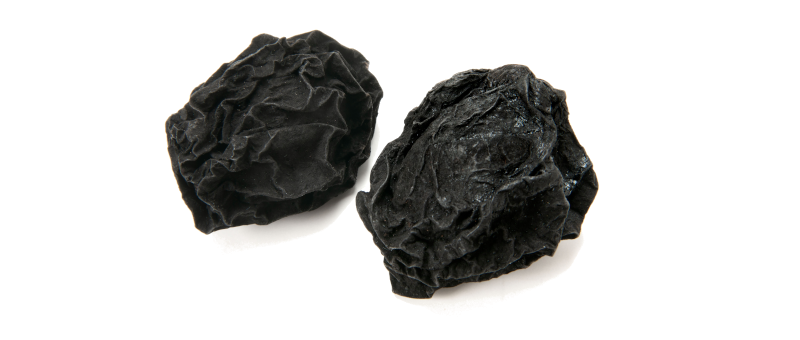
Ubai
The fact that Hoshiko is a liqueur made from plums and spices are added to it is an important element that characterizes Hoshiko. Considering the existence of such spaices in the Shosoin and its historical background, Hoshiko can be described as "The Taste of Shōsōin".
When I first drank Hoshiko, I was surprised by the complex spice taste and the balance between the acidity and sweetness of the plums. Although it is not disclosed what spices are used in Hoshiko, there is no doubt that this spice flavor is what makes Hoshiko so exotic. I consider Hoshiko to be a "The Taste of Shōsōin" because its flavor composition strongly reminds me of the ancient Persian dish of sikbāj . Hoshiko combines the taste of spices with the plum, which has been used in Japan for many years since that time, to create a unique flavor reminiscent of the Silk Road, where trade between East and West took place.
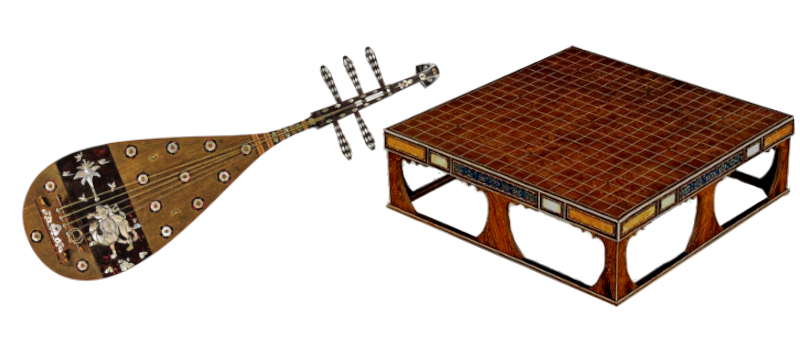
Shosoin is said to be "the eastern terminus of the Silk Road. I think that Hoshiko also reflects the culture and values that were brought to Japan via the Silk Road. This may be based largely on my own experience of recreating Persian cuisine of the 6th century, but I feel that the most important reason is that Hoshiko, a liqueur, is at once Japanese and at the same time somehow stateless. It is true that Hoshiko's taste is Japanese base, but at the same time, it has a Middle Eastern or Western flavor. This seems to be a reflection of Danny Aikawa's experience abroad and his sense that are not bound only to Japanese values.
In the past, Japan actively introduced culture, knowledge, and art from the continent by sending envoys to the Tang Dynasty and Sui Dynasty. However, Japan eventually shifted its orientation toward its own unique culture rather than adopting continental culture. This led to the development of Japanese values as we know them today, and the birth of Japan's unique aesthetics and culture.
In other words, the Nara and Tempyo periods prior to the Nara period were a time when Chinese and distant Western cultures still had a strong influence on Japan. The values and artworks of those periods therefore give us today a sense of something uniquely exotic and un-Japanese.The treasures housed in Shosoin were brought to Japan at exactly such a time, which is why we can feel the presence of the exotic in these objects.
These exotic elements reminiscent of items stored in the Shosoin are also bottled in Hoshiko. In this sense, Hoshiko is both a "Manyo sake" and a "The Taste of Shōsōin" at the same time.
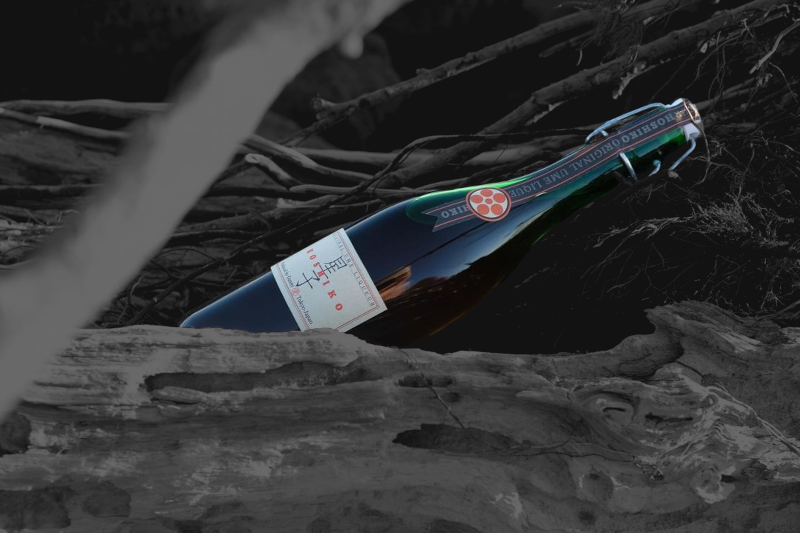
Now, let us turn our thoughts to the events that took place approximately 170 years after the Banquet of Plum Blossoms was held in the Manyo period (710-794). In this period, a famous waka poem about plum blossoms was composed in Dazaifu, it was about memory of the capital. Let focus on that poem.
East wind blows
Sugawara no Michizane (845 - 903) was a man who was left to Dazaifu and died. Later, Sugawara no Michizane became the deity Tenma Tenjin, and is now enshrined as the god of learning as well. The following is a famous waka poem by Sugawara no Michizane.
Author : Suagawara no Michizane
Whenever the east wind blows, my dear plum blossoms remember spring, even if your master won't be here.
This waka poem was composed by Sugawara no Michizane, who was known as a genius man. However, because of his exceptional talent, Sugawara no Michizane was estranged from the court and was moved to Dazaifu. This waka poem was composed by Sugawara no Michizane in memory of a plum tree at his home in the capital. It is very interesting to note that Sugawara no Michizane composed the same theme waka poem in Dazaifu, as the one composed by Hajishi no Mimichi at the Banquet of Plum Blossom was also about the capitaland plum. Because the Sugawara clan was originally related to the Haji clan, and the great-grandfather of Michizane Sugawara, who is Sugawara no Furuhito, changed his family name from Haji to Sugawara. In other words, Hajishi no Mimichi and Sugawara no Michizane, who composed waka poems with the capital in mind, were same clan. Therefore, we can understand that the feelings for the distant capital expressed in these waka poems are the same.
Moreover, Sugawara no Michizane's mother (daughter of Ban Shinsei) belonged to the Ban clan. And the Ōtomo clan changed name to Ban. It means that Sugawara no Michizane who has a same ansester as Otomo no Tabito and Otomo no Yakamoch.
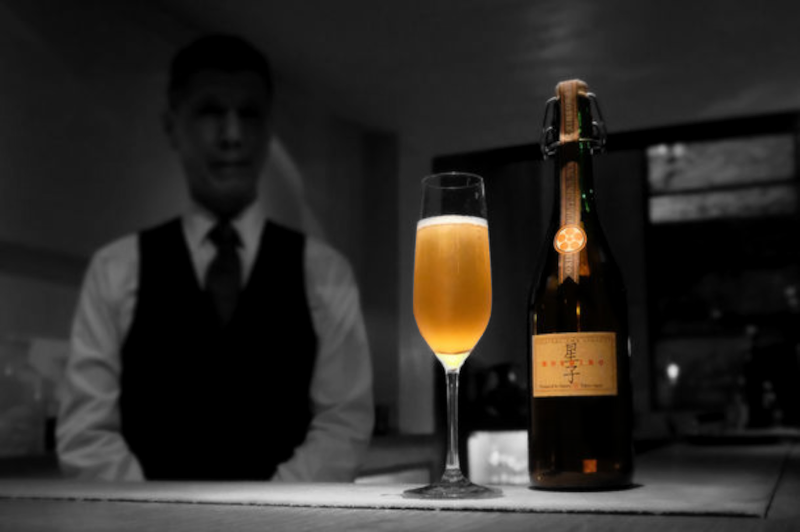
Drinking "Ko-chi" made with Hoshiko, one is reminded of such waka poems by Sugawara no Michizane and the Banquet of Plum Blossom. Needless to say, the name of this cocktail, "Ko-chi", is derived from a famous waka poem of Sugawara no Michizane. Danny Aikawa used to be at the "Tong-fu:東風" restaurant in Roppongi 6-chome, so at the first time, I had mistaken to call the name of this cocktail as "Tong-fu". However Danny Aikawa recited the waka poem by Sugawara no Michizane while explaining that this cocktail is "Ko-chi," which means "east wind". Incidentally, "Tong-Fu" in Roppongi was a cutting-edge Chinese restaurant that was frequented by members of YMO in the past, and Ryuichi Sakamoto wrote the song "Tong-Fu:東風" during his YMO days and performed live there.
This cocktail, "Ko-chi : East Wind," has an exquisite balance between the sweetness of Hoshiko and Brut Champagne, and is a skillful fusion of Japanese and Western flavors, giving it a modern flamboyance and lightness. In the past, Sugawara no Michizane wrote a poem about the East Wind when he thought of the capital city of Nara, and in modern times, Hoshiko is the East Wind blowing from Tokyo to the Western country. I am looking forward to seeing Hoshiko become more popular around the world and the east wind blow more to the west (Europe and USA).
A moment of time in a spring night is worth a thousand pieces of gold
「春宵一刻値千金」
In discussing about plum blossoms, I would like to mention Su Shi, a poet of the Northern Song Dynasty and one of the Eight Masters of the Tang and Song (representative calligraphers of the Tang and Song Dynasties). Su Shi was also a calligrapher, and his "The Cold Food Observance" is a wonderful work, and I once had the privilege of looking at it in the National Palace Museum in Taipei, Taiwan. I spent a lot of time looking at it in the morning at the National Palace Museum while no one else was there.Su Shi's poetry is excellent, as is his calligraphy, and I would like to quote here a seven-word poem called "Spring Night".
Spring Night
春宵一刻値千金
花有清香月有陰
歌管楼台声細細
鞦韆院落夜沈沈
Translate :
A moment of time in a spring night is worth a thousand pieces of gold.
The flowers exud a faint scent, and moonlight casts a shadow of sin under the flowers.
In the distant high buildings, the bureaucrats and nobles are still enjyoing the song and dance music.
And the courtyard with the swing is immersed in the secluded night.
I like this Su Shi's poem so much that I can recite it at any time. It is said to be a poem about a tranquil spring night, but at the same time, there is something decadent about the moon's shadows and the scent of flowers in the darkness of a spring night.
What is described here as "the flower has an exquisite fragrance" refers to the plum blossom. I mentioned at the beginning of this paper that there is a fragrance at night and that the fragrance becomes stronger when it is dark. In Su Shi's poem, too, the outline of the fragrance of plum blossoms becomes clearer and more present when the moon is shading and the sense of sight is reduced and the sense of smell becomes more acute, as is well expressed in the poem.
There is another reason why the fragrance of ume blossoms is so strong. This is because the night is deepening, and the voices of people who were enjoying noisy songs and music are gradually fading away. In other words, it is the time of the day when the fragrance is more strongly felt as the hearing is reduced. However, there is a muted silence, not complete silence, but rather a faint, inaudible sound of voices somewhere in the building. It is an image that the night is getting deeper and darker.
In Japan, the poem seems to be simply a poem about a spring night, but in China it is also seen as a poem with erotic content. The reason for this is the swing. It is therefore necessary to explain more about what this swing is. The anatomist and anthropologist Takeo Kanazeki, whom I admire, tells the following interesting story about the swing in his book Otsukisama Ikutsu.
Otsukisama Ikutsu:Men-rin
The swing was originally used for harvest festivals, when a girl was chosen to welcome the gods, and while ordinary men and women would join the others in the woods, the girl on the swing would commune with the unseen gods (the ancient Japanese farmers called the thunder god Inabikari 'Ina-no-Tama' or 'Ina-Spirit'). lightning bolt. The 'tsuma' of the lightning bolt is male, like a woman saying 'my husband' to her husband, and is the long pole that impregnates the rice plant at the beginning of autumn.
...
An example of a swing that belongs to a woman and still leaves a mark of luster in the early modern period is often shown in the famous painting of Flanagor at the Wallace Museum in London.
This explains why the swing is linked to rituals associated with spring fertility. Spring is also the season of love, and in agriculture it is the time to start sowing seeds. Girls were placed on the trapeze to pray for a good harvest in agriculture. Incidentally, trapeze, or swing, is also a seasonal term for spring. Looking at the relationship between the earth and lightning, the earth is female and the lightning is male. The electrical discharge phenomenon of lightning striking the earth ionises the oxygen and nitrogen in the air, which dissolve in the rain and provide natural fertiliser for the earth. In other words, a bolt of lightning is a long stick that impregnates the rice plant, and its interaction with the falling earth brings about a bountiful harvest. The girl on the swing in spring is therefore in the air as an intermediary between the air and the earth. First of all, there is an inherently erotic perspective on the trapeze.
In China, the swing also contains another special erotic element. This is because in China there was a custom of "foot-binding", and a woman's legs being visible on a swing was seen as an erotic figure in its own right. "foot-binding" is the practice of wrapping a cloth around a woman's legs to stunt their acquired growth and make them smaller. Thus, there was an intense fetishisation of women's feet in China.
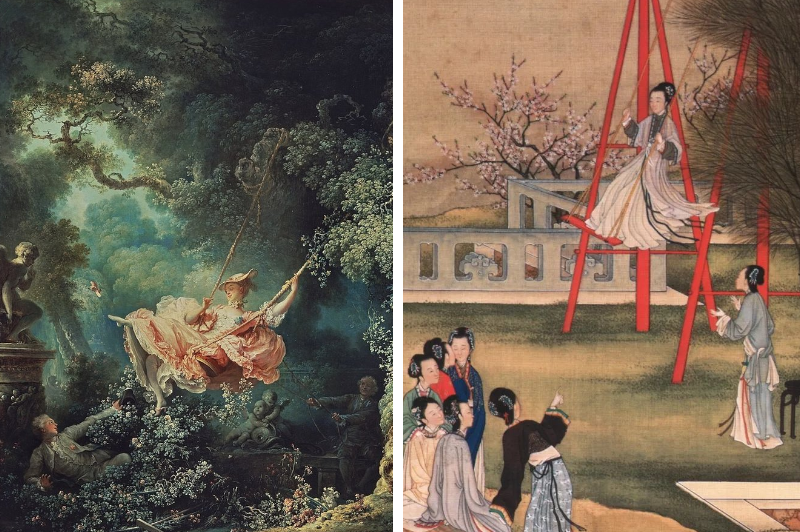
LEFT: The Swing : Jean-Honoré Fragonard
RIGHT: Trapeze playground:plum blossoms in bloom
It is also important to know who and when the playground equipment called a swing was played with. Katsuro Hara makes the following interesting observations in Shusen-ko.
Shusen-ko
Mainly those who played with the swing were not men. In this respect the east is same as the West.
...
It is interesting to note that swing were played not only during the day, but also at night. It was the season of the year, so it was not impossible to play outdoors at night. They did not make a fire but used the moonlight in the night time.
It is noted here that it is women who ride the swing, whatever in the West or the East. It is also interesting to note that "swing rides were done at night in the hazy moonlight", indicating that the swing was a night game. In other words, the swing was a plaything for women to play with on spring nights.
In addition, I would like to point out that while playing swing in the spring night, there were plum blossoms and other floral scents in the darkness. Interestingly, in the Western flanagor 'swing', flowers are also depicted around a man looking down at a woman's legs, also flower at the man's left breast. Here again, we can understand that there is an embedded cultural code that floral incense accompanies swings in both the West and the East.
Let's return to Su Shi's poem "Spring Night". The scene where the swing set is left alone in the garden as night deepens, and the fragrance of fragrant plum blossoms fills the evening air, is even erotic. There is not complete silence, but rather the sound of a woman who has finished playing on the swing, as if she and a man are having a conversation in a bedroom at the back of the house. It is also very good that the contrast between the swing, where the women were playing earlier with their charming voices, is left in the darkness of the night and the night is getting darker and darker. In this way, the plum blossom blooming in the moonlit night is a very erotic and sexy presence. Su Shi's poem is truly a skillful description of that moment in a spring night, and it seems to make us modern people feel the fragrance of the plum blossoms that have been there for a long time.
The space of a bar is also a place where this kind of eroticism can be felt. The flickering light in the darkness and the aroma of alcohol and cocktails are, in my opinion, mechanisms that enable a shared experience of the same space as in Su Shi's "Spring Night".
Drinking Hoshiko while thinking of Su Shi's poems is also an excellent way to spend night. It is a pleasure at a bar to feel the night quietly passing in front of a glass of Hoshiko or Hoshiko cocktail, and at the same time it seems to be a way to enjoy the sexy liqueur called Hoshiko. It goes without saying that if there is a Hoshiko to add like a plum blossom in such a "place", you can have the best night, erotic and sexy.
Danny's Bar
Danny Aikawa is known as a legendary bartender who started at the Cinema Club in Harajuku and worked his way up through Roppongi's Tong-fu and Azabu Juban's Star Bank. It is probably fair to say that the culture of Tokyo's night scene has always flourished in Danny Aikawa's witnessing. Danny Aikawa is the father of the plum liqueur Hoshiko.
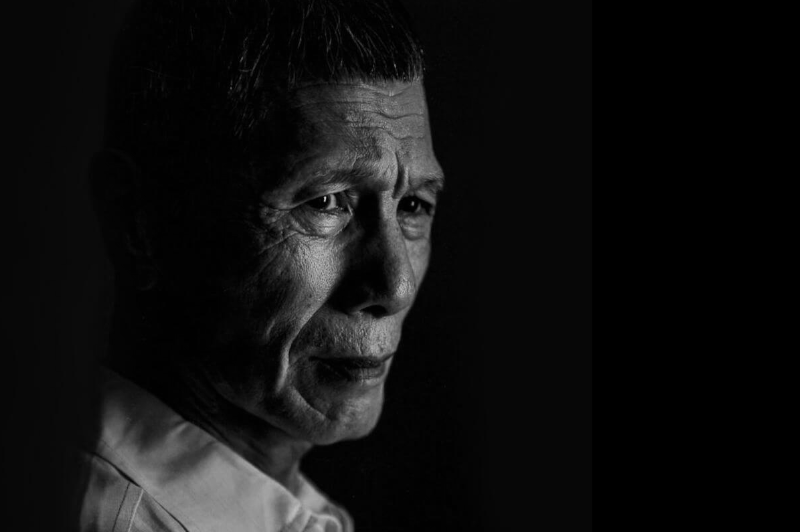
Danny Aikawa started a bar called HOWL at Gaien-mae in 1997, the year Allen Ginsberg died. Allen Ginsberg's "howl" is a symbol of the Beat Generation's work that has been passed down alongside William S. Burrough's Naked Lunch and Jack Kerouac's On the Road.
I myself have been greatly influenced by Beat Generation literature, and I think that Jack Kerouac's On the Road, which I read when I was in high school, had a major impact on my sense of values. Perhaps it is because the longing for somewhere other than here has always fascinated me, and I think it was reading On the Road that led me to live abroad for several years.
Also in the 80s and 90s, New York contemporary artists, punks and avant-garde musicians began to look up to beatnik writer William S. Burroughs as their Godfather, collaborating with their own work and William S. Burroughs' readings. I read a lot of William S. Burroughs' novels, but I also used to collect these minor records. Allen Ginsberg also released a number of records, as poetry is also something to be sung. So I also continue to own records of Allen Ginsberg's songs and readings of his poems, which it have not yet been released on CD or online distributed.
I have heard Allen Ginsberg read his poem "Howl" many times over. Naropa University in Boulder, Colorado, has the Jack Kerouac School of Disembodied Poetics, founded by Allen Ginsberg, Ann Waldman, John Cage and others, and this Naropa University has made the 9 August 1975 Allen Ginsberg's reading of the poem 'Howl' is available in the public domain. This reading is better than any other reading of 'Howl' currently available on CD or official online distribution, and I consider it to be the best reading of Allen Ginsberg's "Howl". I would like to invite you to listen to the reading of "Howl" by accessing the following audio sources. It is also available for download, so I hope you will keep it as a permanent archive. (Howl's reading starts at 40:50).
Poetry reading sources
: Anne Waldman and Allen Ginsberg reading, including Howl
Opening part
I saw the best minds of my generation destroyed by madness, starving hysterical naked,
dragging themselves through the negro streets at dawn looking for an angry fix,
angelheaded hipsters burning for the ancient heavenly connection to the starry dynamo in the machinery of night,
Danny Aikawa closed his shop on 31 March 2014 after 17 years of running HOWL. From the name of the bar, it is clear that this place was born out of sympathy for the beatnik expletives and poetry.
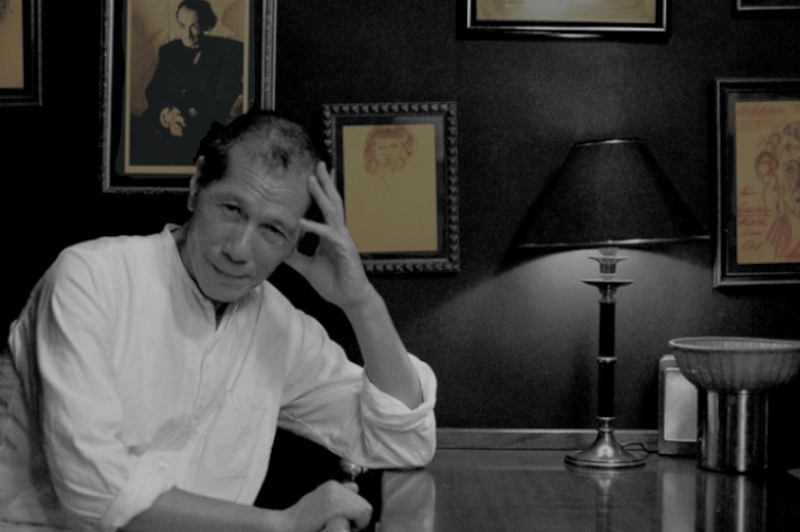
Also on the walls of the HOWL, there was Antonin Artaud's portrait, which also seems significant. Antonin Artaud was an actor, poet and novelist who participated in Surrealism. I was greatly influenced by Surrealist poetry and painting too, but I think Artaud was unique among them. Artaud joined the Surrealist movement but fell out with André Breton and was expelled four years later.
These and other things included. Antonin Artaud's influence on later generations was significant. For example, the French philosopher Gilles Deleuze and psychoanalyst Felix Guattari would later develop the idea of the "body without organs" mentioned by Artaud in Anti-Oedipus and A Thousand Plateaux. This should also be seen as an influence on later generations left by Artaud.
Another Argentine rock musician I love, Luis Alberto Spinetta, released an album called 'Artaud' in 1973 under the name Pescado Rabioso. While his previous album, 'Pescado 2', was influenced by the poet Arthur Rimbaud, this third album, 'Artaud', was Spinetta's own musical output in response to Antonin Artaud's work Heliogabalus: or the Anarchist to be Crowned. A small portrait of Antonin Artaud is printed in the top right-hand corner of the album jacket. The green and yellow album was inspired by a letter Artaud wrote to Jean Paulhan dated 2 April 1937: The design is based on the explanation which Artaud write "Are not both green and yellow the opposite colors of death; gfeen for resurrection, yellow for decomposition".
I have listened to this album many times and I can still say that it is a definite masterpiece. It is a pity that Spinetta is still not well known in Japan. I hope you will take this opportunity to listen to it.
"Place" as a salon
Allen Ginsberg and Antonin Artaud, two poets featured in Jingu-mae's bar, HOWL. It may seem that these American Beat Generation literature and French Surrealist literature have nothing in common. However, given the role of the bar as a "place" that brings people together, as mentioned above, I don't think it can be said that they are necessarily unrelated.
In the Beat Generation, literary activity began when Allen Ginsberg, Jack Kerouac and William Burroughs met at Columbia University in New York. Later, they also lived and worked in Morocco and Paris, staying for long periods in the 42-room Beat Hotel at 9 rue Git le Coeur Paris in Carcier-Latin, where Allen Ginsberg, in room 25, wrote part of his poem 'Kaddish', and in room 15 William Burroughs completed Naked Lunch and Soft Machine. It can thus be said that the Beat Hotel functioned as a kind of salon-like "place" for the beatniks of the time.
The Surrealists set up the Pierre Naville's house at 15 Rue de Grenelle, PARIS, as the 'Surrealist Institute' on 11 October 1924 and launched their journal, Surrealist Revolution, on 1 December of the same year. They met regularly and actively socialised with their peers, leaving behind numerous such group photographs. They produced many poems, novels, paintings, sculptures and other works of art as a movement based on these salon-like "place" and other connections.
The reason why André Breton, Louis Aragon, Tristan Tzara, Paul Éluard, Salvador Dalí, Yves Tanguy, Max Ernst, Man Ray and others participated and left many famous works is that the Surrealists understood their work well and shared their values. It may be because they were friends who understood each other's work well and shared the same values.。
The existence of these "place" brought together people with the same values and sensibilities, and helped them to refine their values. This makes it clear that salon-like "place" played a major role in fostering culture, art and literature. Without the existence of such "place", both Beat Generation and Surrealism might not even have been recorded as literary and artistic activities by later generations.
Now, back to HOWL, which was Danny Aikawa's BAR.
The poems of Allen Ginsberg and portraits of Antonin Artaud were displayed there, perhaps because it was meant to create the same "place" in the form of a bar that beatniks and surrealists used to gather in the past. This "place" is a salon, a space where people gather to try to produce something new and creative from within. The following words of Danny Aikawa should be quoted on this subject.
For people who are trying to do something new,
They need a place where they can be creative and enjoy themselves.
In addition, the BAR's HOWL may have been based on the enjoyment of drinking with words, in other words, 'drinking with poetry'. It could be a literal poem, or even a conversation with people, which is also part of poetry, depending on how you think of it.
For example, I feel as if I could drink many glasses of alcohol just from Su Shi's 'Spring Night'. It is true that poetry has something that appeals to the hearts of those who read it, transcending the differences of time and culture, and that it can greatly move our hearts. If there is a glass of alcohol by your side when you enjoy such poetry, it will serve as a spirit-enhancing agent that multiplies the poetry's appeal many times over. Of course, this is especially true if it is the cocktail of Hoshiko, made by the master as Danny Aikawa.
Drinking with Poetry
"Drinking a drink while thinking of poetry" may sound highbrow and intellectual, but that view is mistaken. Because music is accompanied by drinking. Music has lyrics, and sometimes those lyrics somehow catch your attention and you can't get away from them. In this sense, "drinking with poetry" is not something special, but common. Furthermore, even if you don't think of the poem itself, if you drink with the poem somewhere in your mind, you can say that you "drink with the poem". Poetry can also be found in casual passages or in casual chats with your friends.
The Tang dynasty poet Bai Juyi (Bai Le Tian), in his poem Three Friends of the Northern Window, wrote the following poem about the pleasures of drinking wine in poetry.
Three Friends of the Northern Window (北窓三友)
今日北窓下 自問何所爲 欣然得三友 三友者爲誰
琴罷輒挙酒 酒罷輒吟詩 三友㴲相引 循環無已時
Translate:
Today, I'm heading to the north window.
I ask myself, what shall I do?
Yes, I have three friends.
Now, who are these three?
When I stop playing instrument, I drink alcohol.
When I stop drinking, I write poetry.
These three will take it in turns to play with me.
I'll never run out of time.
This is a true poem about the pleasure of ”drinking with poetry”. Poetry, music and alcohol can be enjoyed as friends forever, and the alcohol one drinks at that time becomes an invigorating agent that makes one creative. Alcohol falls into people like a seed or nourishment, and flowers blossom through the individual expression that is output from it.
Drinks and places that make people creative and entertained. These seemingly useless things are the most necessary riches in a person's life. When I think of Bai Juyi facing the north window, playing the zither, drinking sake and writing poems, I feel the joy of drinking alone and the flow of fulfilling and contented time. I would like to express my heartfelt gratitude that these three friends have always been beside of me as well. And Hoshiko is one of the best friend I would like to welcome anytime, anywhere.
Danny Aikawa
To talk about the liqueur Hoshiko is to talk about Danny Aikawa. Therefore, it seems to be the flow to talk about the charm of Hoshiko by talking about Danny Aikawa, but I dared not to talk about Hoshiko in such a way. Because people who know Danny Aikawa personally have already told a lot about his charms, and there is no better way to get in touch with his charms than to visit a bar where Danny Aikawa is, have a cocktail and listen to his stories directly. Therefore, what I have said here is only about Hoshiko, an incarnation of Danny Aikawa, and what I personally felt after drinking Hoshiko.
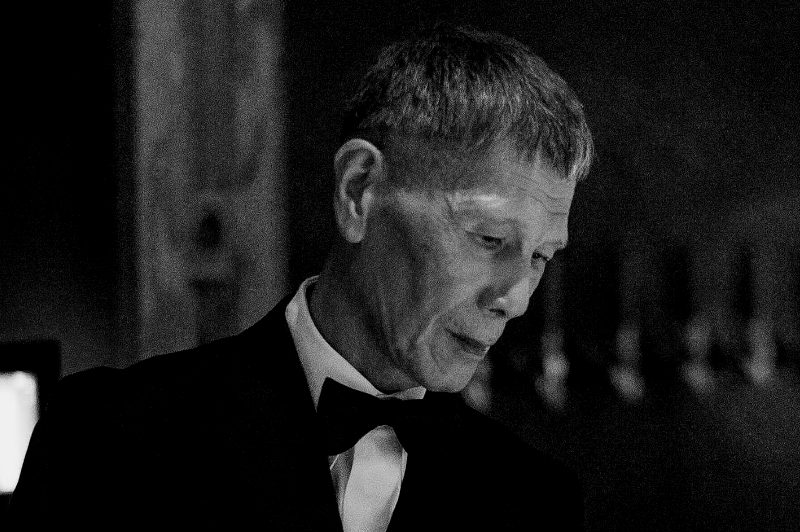
To get to know Hoshiko, you need to go to a BAR with a candle in your hand when the night falls. And if you taste the Hoshiko cocktails made by Danny Aikawa, you will naturally understand a lot about Hoshiko. When Danny Aikawa makes and serves Hoshiko cocktails, you can clearly feel his love for Hoshiko, which is also his own work. Alcohol that is overflowing with the creator's thoughts like this is undoubtedly good alcohol. And while drinking it, I am reminded that Hoshiko is an incarnation of Danny Aikawa.
Hoshiko has its own vintage, with different personalities from year to year. Danny Aikawa says: "Alcohol that comes from a lab-like environment, where there is no love and no soul, cannot be a vintage". In other words, by daring to accept the unevenness from year to year as a good thing, it is clear that Hoshiko is made into a liqueur with more blood and love. I think this is also a projection of Danny Aikawa's way of life, who has experienced various different stages in his life, and that is why I think Hoshiko is an incarnation of Danny Aikawa. Danny Aikawa is a bartender of many legends. However, having worked on various legendary bars and riding his harley davidson to Sturgis may only be one aspect of his character. And it could be said that this is the same as the vintage of Hoshiko. Therefore, I think that in order to talk about Danny Aikawa, I should talk about Hoshiko, and in order to talk about Hoshiko, I should talk about Danny Aikawa.
It used to be displayed at HOWL's wall at Jingu-mae. Portrait of Antonin Artaud.
The following words from Artaud's poem "La liqueur des rêves" seem to me to describe for the essence of Danny Aikawa and his incarnation, Hoshiko.
【 La liqueur des rêves 】
Et quant à l'apparence physique de mes rêves, je vous l'ai dit: une liqueur.
Translate:
And as for the physical appearance of my dreams, I have told you already, a glass of liqueur.
The figure of Danny Aikawa can be seen through the plum liqueur Hoshiko. No other Japanese liqueur gives such a sense of its creator, and his attitude of accepting the unevenness of the quality from year to year is also connected to tasting the various aspects of people as they change with the stages of their lives. I think we should drink a new Hoshiko every year in order to experience Danny Aikawa's way of life. Because that is what it means to be "the physical appearance of Danny Aikawa's dream, a glass of liqueur (Hoshiko)".
Reference
Arioka, Toshiyuki Ume Ⅰ
Caillois, Roger Man, Play and Games
Deleuze, Gilles Anti-Oedipus : capitalism and schizophrenia
Deleuze, Gilles A thousand plateaus : capitalism and schizophrenia
Gadamer, Hans-Georg Truth and Method
Hara, Katsuro Shusen-ko
Huizinga, Johan Homo Ludens
Ishigami, Ken Legend of trss
Jia sixie Qimin Yaoshu
Kanazeki, Takeo Otsukisama Ikutsu
Kobayashi. Akio Coffee House
Li Bai Preface to Banquet in the Peach Garden on a Spring Night
Ōtomo no Yakamachi Man'yōshū
Starchild Inc. / Plum Shokuhin Inc. Hosiko Offical site
Yashita, Keiko Manyo's Birds
Xiao Tong Wen Xuan
